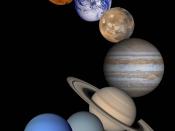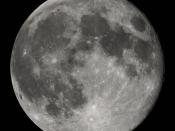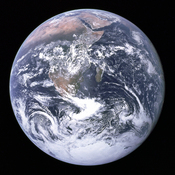Earth vs. Mars: The Two Planets Weigh In
Mars is the most Earth-like other world known, and with the two planets on the verge of their closest approach in recorded history (Aug. 27), it's time for the planets to weigh in. In this tale of the tape, we present the most pertinent and interesting facts that compare and contrast the two very different worlds.
Earth Mars
Diameter About 7,926 miles (12,756 kilometers) but growing, at least at the equator. Roughly 4,222 miles (6,794 kilometers), or 53 percent that of Earth.
Life Yes. Unknown.
Intelligent life Some would say so. No, probably microbes at best.
Distance from Sun 1 astronomical unit (AU), or about 93 million miles (150 million kilometers), on average. Ranges from 1.381 AU to 1.666 AU, due to non-circular orbit.
Temperature Way too hot in summer or way too cold in winter, depending on locale, or both.
Planetwide: 47.3 degrees Fahrenheit (8.5 Celsius) over land areas. Warmer if surface air above oceans is figured in. Ridiculously cold most of the time. Freezing in most places. Planetwide: -67 degrees Fahrenheit (-55 Celsius). Can be shirtsleeve during fleeting moments of daytime summer.
Most striking feature
Looks blue from outer space, due to being two-thirds water.
Looks ruddy from outer space, due to being covered in oxidized iron. Earthlings call this "rust."
Cosmic radiation Manageable, protection courtesy a strong magnetic field. Problematic, due to a weak magnetic field.
Weather Hurricanes, typhoons and tornadoes a real problem. Disgustingly interminable fog in coastal California. Utter lack of rain in parts of Africa. Way too wet in many other places. Dust storms abound. Sometimes whole planet is obscured. Dust devils that soar higher into the atmosphere than terrestrial tornadoes and hurricane-like storms as big as Texas.
Heft 1 Earth mass. In kilograms, it's...



Earth vs. Mars
This doesn't look anything like an essay. Maybe you could space it and put it in paragraphs but the content is good.
3 out of 3 people found this comment useful.